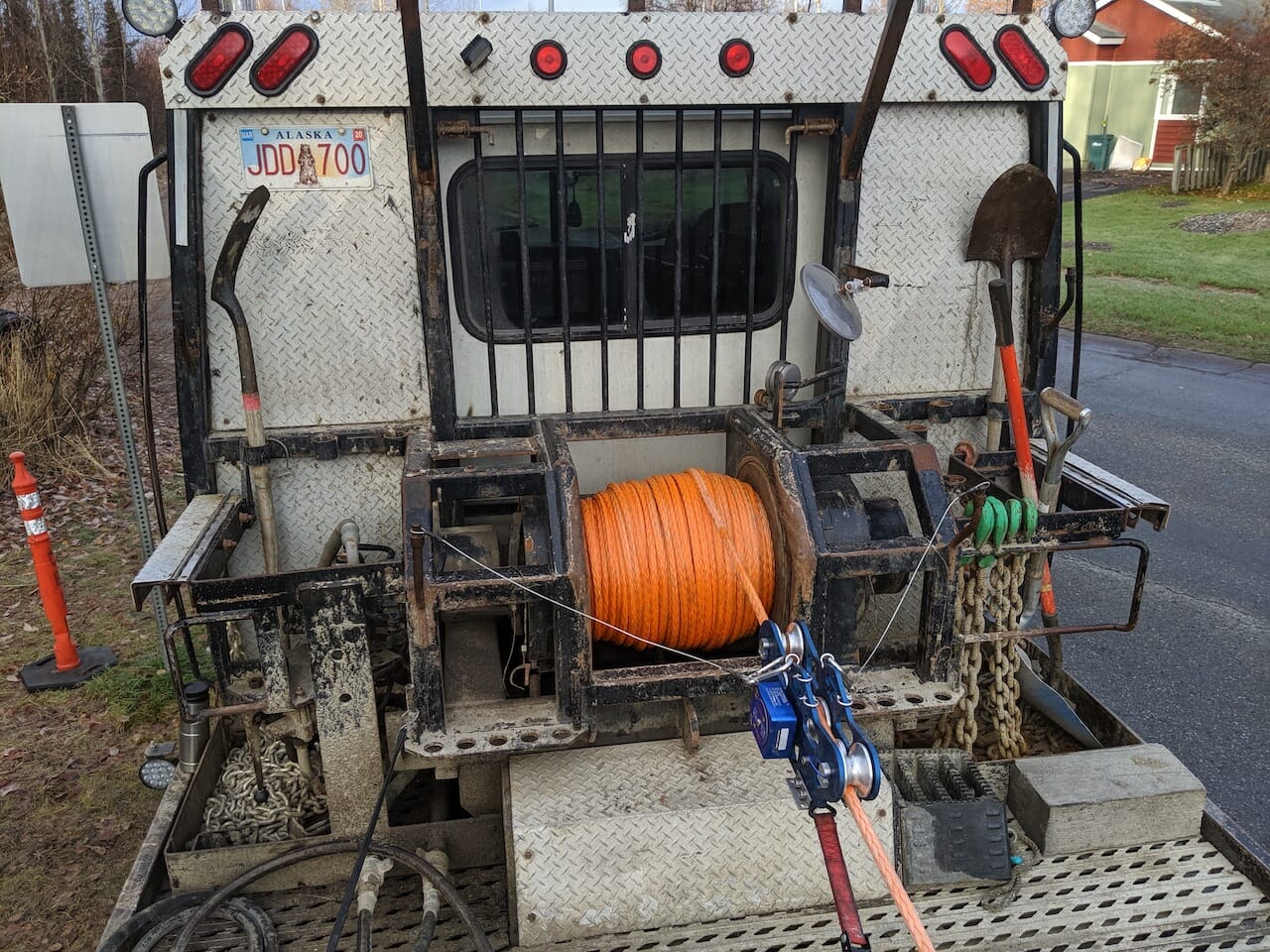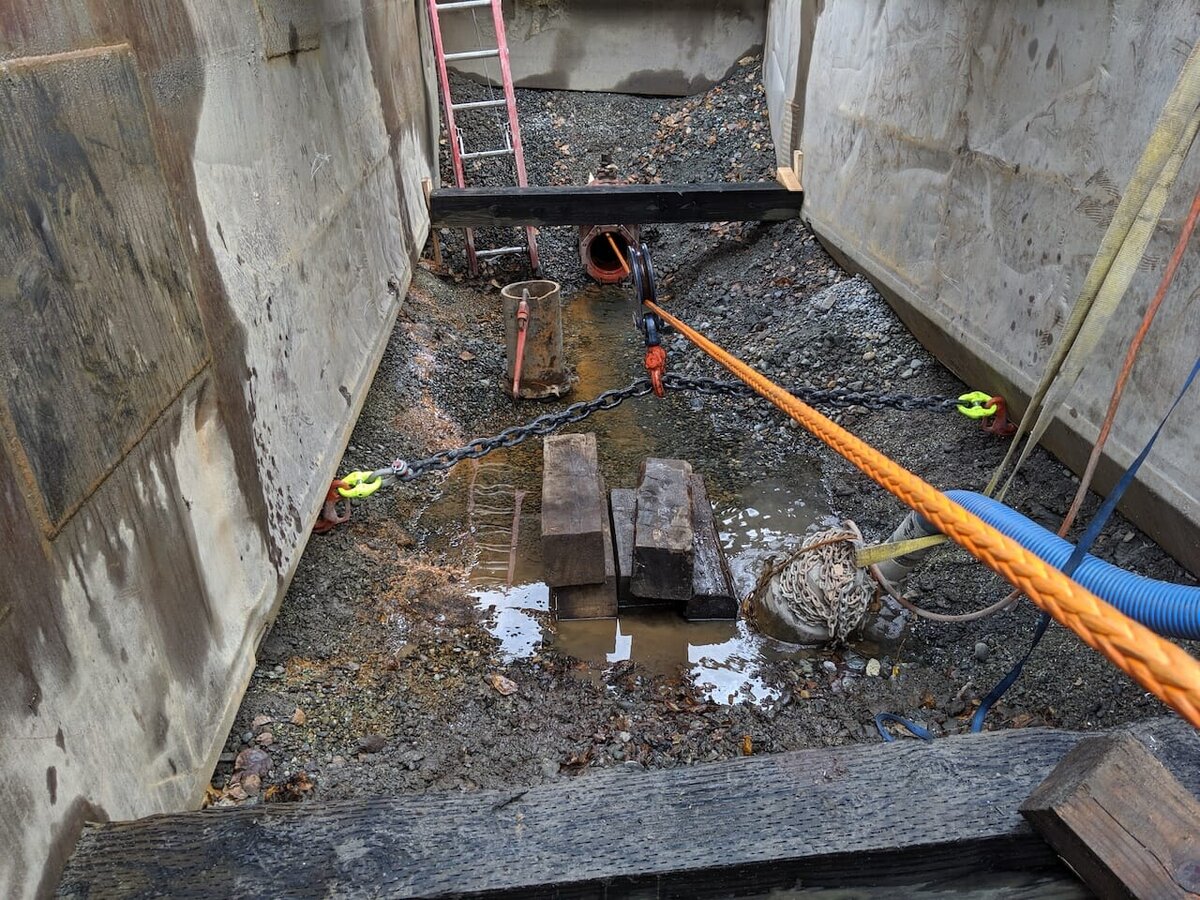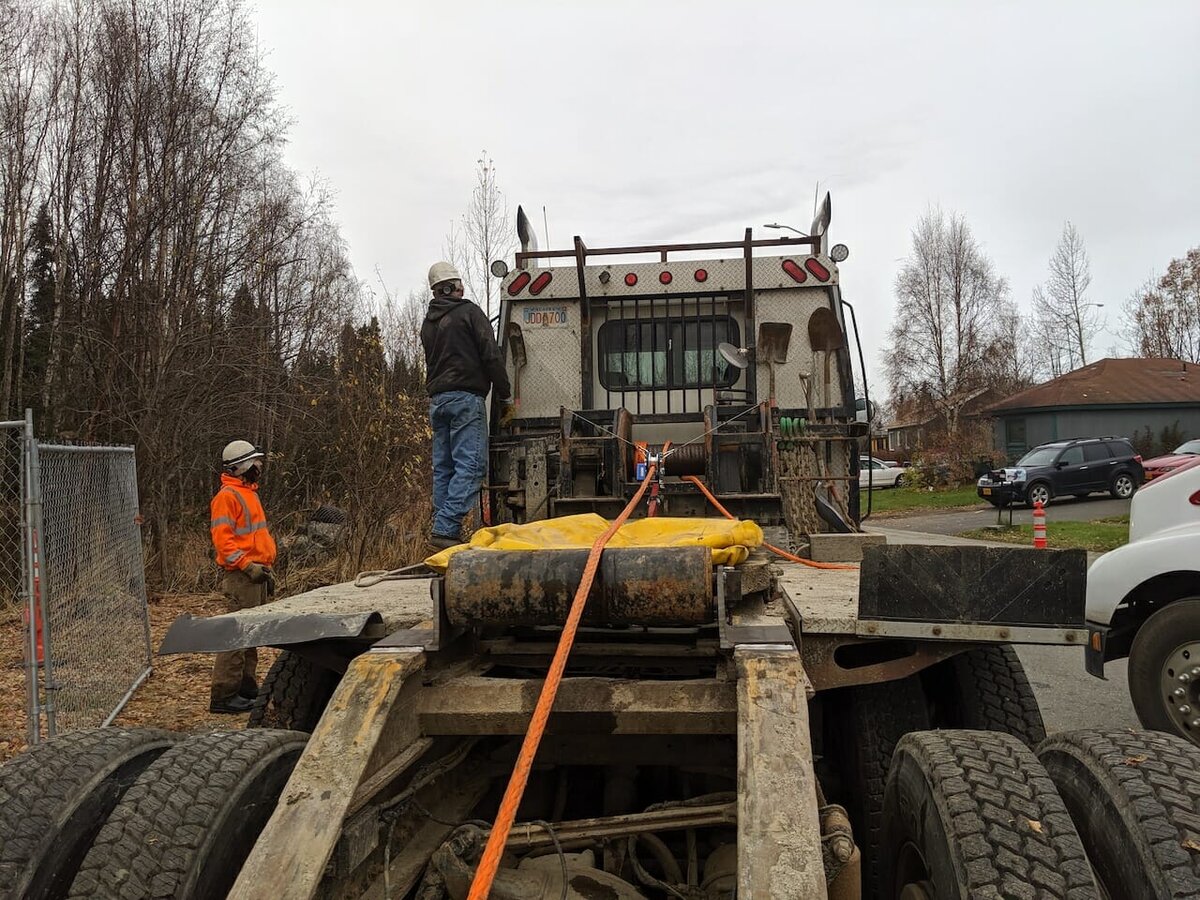
Central Environmental Inc. (CEI) used a 10t capacity CableSafe running line dynamometer from Straightpoint (SP) to honor a contract for Alaska Water and Wastewater Utility (AWWU), which is currently delivering a major project in Anchorage, Alaska, U.S.
Utility contractor CEI applied the CableSafe, designed for measuring synthetic rope tension, and accompanying Bluetooth technology during installation of a water main pipe. CableSafe is more commonly seen in the broadcast and telecommunications tower erection, service, and maintenance industry.
CEI used the product with a hydraulic winch to monitor the slip lined 8-in. fusible High-Density Polyethylene (HDPE) Standard Dimension Ratio (SDR)-11 pipe, where the tensile strength could not exceed 25,000 lbs. Bluetooth prevented the need for personnel to stand next to the line under tension during the slip line operation; readings were taken on SP’s accompanying app and documented for the customer.

Straightpoint’s 10t capacity CableSafe running line dynamometer.
Jay Stepetin, project manager at CEI, said: “The load cell was the only device that was practical for our situation; we measured the tension frequency at the default two-second intervals. The slip line operation was conducted using a hydraulic winch on the receiving pit and an excavator to aid in guiding the pipe into the 10-in. cast iron carrier pipe. The CableSafe allowed me to record the tension exerted on the slip line HDPE SDR-11 pipe, while also providing radio direction to employees at each end of the job during the slip line operation.”
“The standout challenges were presented by dewatering the insertion pits and limited workspace,” he added.

The slip line operation was conducted using a hydraulic winch.
Stepetin explained that CEI’s full scope of work centered on providing a redundant water supply to the approx. 110 customers East of the Muldoon Curve on Regal Mountain Drive and Chaimi Loop. It involved excavating, shoring, dewatering and exposing the existing 10-in. water main cast iron pipe (CIP) at Regal Mountain Drive and Tikishla Street to create safe insertion pits for installation of the new 8-in. fusible HDPE SDR-11 water main pipe. CEI replaced the existing, corroded 36-in storm drain corrugated metal pipe (CMP) that crosses the existing 10-in. CIP at Tikishla Street. Further, it required documenting the condition of the existing 10-in. CIP carrier pipe by video inspection and verified that it was clean and free of obstructions that could restrict insertion or slip line of the 1,120 LF of 8-in. HDPE SDR-11 pipe.

Challenges included dewatering the insertion pits and limited workspace.
SP recently updated its Bluetooth capability and launched an enhanced version of its popular HHP app. Load cells now use wireless technology for exchanging data over short distances to communicate with up to eight devices, carrying the information up to 100m (328 ft.) away. Collected data can be sent onto other recipients in the form of an Excel spreadsheet or PDF report. Users can send reports from the same device that captures data that is already on the user’s person—such as a mobile or cell phone.
